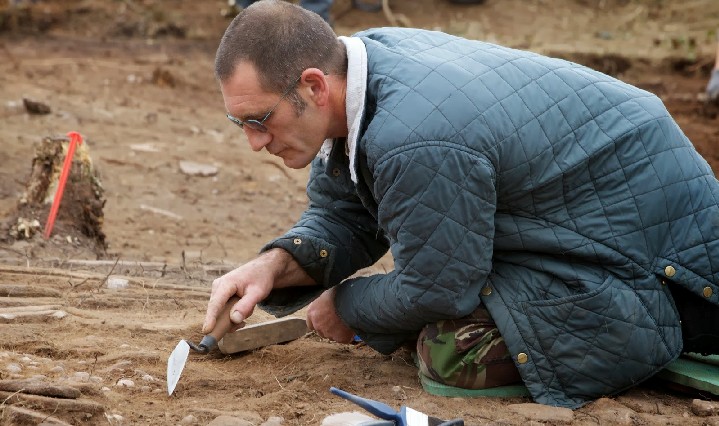
‘Operation Kiwi’ draws to a close
‘Operation Kiwi’, the community archaeology project to excavate the Messines Model on Cannock Chase, is coming to a close. More than two weeks of excavation finished at the weekend, and after the remains have been measured, scanned and recorded, it will be covered up again to protect it.
Funding from Natural England has enabled Staffordshire County Council to commission No Man’s Land, specialists in the archaeology of the First World War, to lead the work. The dig has involved local volunteers, schools, professional archaeologists and local historians. Senior archaeologist Martin Brown was delighted at the community response, which meant that work was completed a day ahead of schedule.
The dig has thrown up some surprises – the level of detail in the model is remarkable, including an area of Allied trenches, cobbled roads, railways, contour lines, field boundaries, blockhouses and defended cellars in the ruined village of Messines.
Although the dig is complete, there is still worked to do. Most importantly the model will now be recorded using high-resolution laser scanning. This will enable further research on the detail in the model, and future production of 3D and digital copies of the site. Unfortunately the remains are extremely fragile. It has been damaged by root growth and animal burrows over the past 95 years and the concrete from which it is constructed is of very low quality. Because of this it will be covered up over the next fortnight with a breathable membrane, a layer of inert sand to prevent intrusion from plants, a mesh to prevent animals burrowing, and finally top soil and heather brash to return the site to a natural heathland appearance.
Here, Steve Dean, Principal Archaeologist with Staffordshire County Council, explains the significance of the model:
